Shiplap is a type of wall paneling that is distinguished by horizontal wooden planks that are laid side by side. Each shiplap board has a notch on both long sides that fits with other shiplap planks. When the boards are placed together, the overlapping joints create a groove, or rabbet, between them.
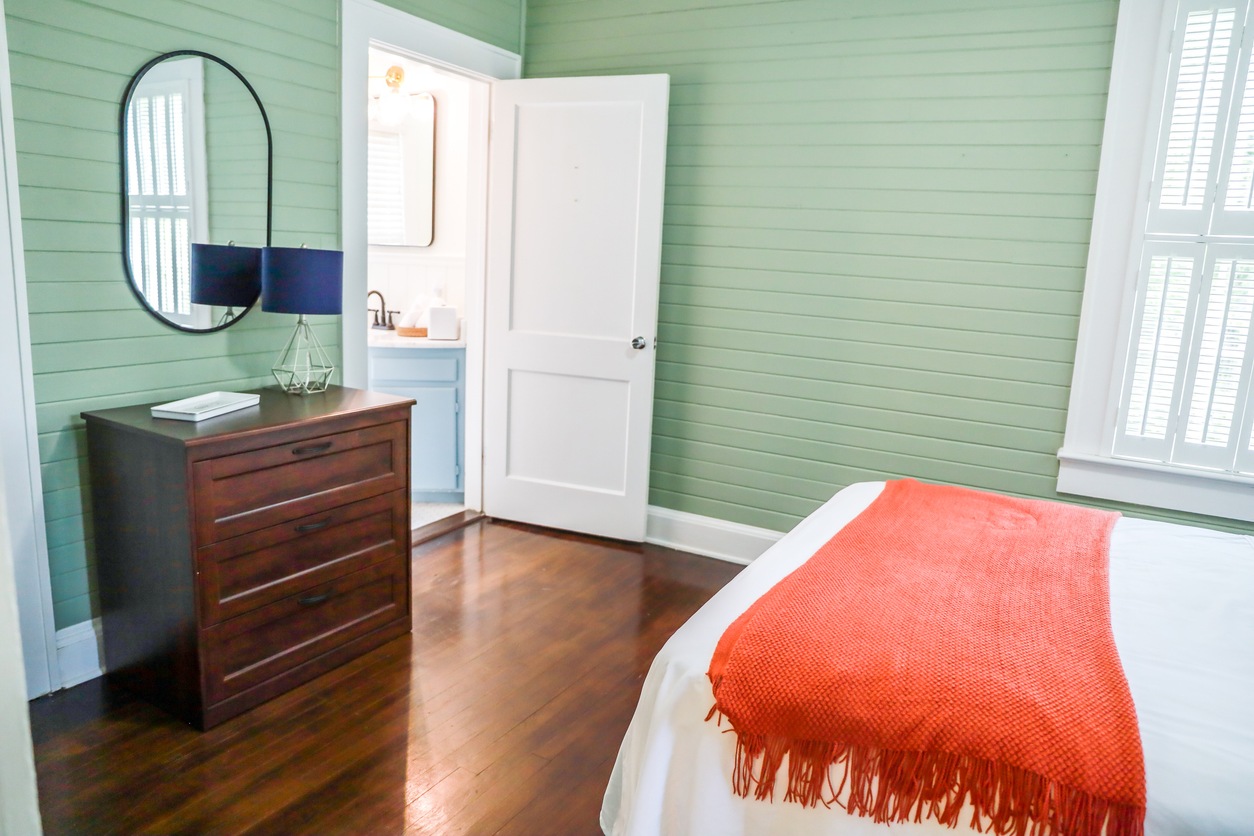
Though shiplap paneling has a long history, its popularity has recently grown significantly. Shiplap paneling is a popular wainscoting style that can be found in traditional farmhouse, coastal, and even contemporary designs. It is an excellent way for anyone who wants to transform their homes into comfortable and inviting retreats to add texture, warmth, and authenticity to their spaces. Shiplap wood paneling is a timeless design choice that can be used as a focal point or to enhance the overall aesthetic of a room.
In shiplap wood paneling, the planks are arranged horizontally for both functional and decorative reasons. This paneling style was originally used in the construction of ships, as the name implies. The horizontal boards in early shiplap paneling had a groove notched in them so that they overlapped slightly with the adjacent board. This created a water-tight seal.
Shiplap wall panels started to appear in buildings by the eighteenth century. Shiplap was a popular feature in cottages in harsh climates because it kept them warm and dry. Shiplap wall paneling was not a design feature in these modest homes; it was a functional necessity. Homeowners painted and covered the shiplap to make it look like plaster walls.
Shiplap molding has gained popularity in the 2010s thanks to home renovators Chip and Joanna Gaines. This molding style is popular for covering entire rooms from floor to ceiling as well as for creating accent features.
Shiplap is a versatile wall paneling style that can be used in a variety of home and commercial settings to achieve a variety of functional and aesthetic goals.
Walls: Shiplap is most often used as a wall covering. You can change the appearance of shiplap walls by covering the entire wall, a portion of the wall, or a single wall as a focal point.Ceilings: Shiplap can be used as a decorative feature on ceilings. Some people apply shiplap to the ceiling alone, or they apply it in combination with wall shiplap.Entryways: Shiplap creates a dramatic impression in mudrooms and entryways, which sets the tone for the rest of the house.Bathrooms: The use of shiplap in bathrooms results in a light, airy, and relaxed aesthetic. Shiplap wainscoting is also a long-lasting wall covering that protects the drywall from moisture.Kitchens: Shiplap in the kitchen makes the space feel cozy and welcoming. Shiplap can be used to add interest to walls, cover venthoods, or surround kitchen islands. Shiplap is also popular as a kitchen backsplash.Bedrooms: Accent walls and headboards are two common uses for shiplap in bedrooms.Fireplace Surrounds: The area around the fireplace can be framed with shiplap paneling to create a visually appealing focal point for the space.Exterior: Shiplap is used on the outside of homes by some builders, but it is less popular than it is on the inside. Depending on how builders use it, exterior shiplap can produce a traditional, rustic, or modern aesthetic. Exterior shiplap is typically pressure-treated and made from pest- and rot-resistant woods like cedar.Built-in Furniture: Shiplap molding can be incorporated into built-in furniture, such as bookcases, shelves, cabinets, or window seats.Commercial Spaces: Shiplap should not be limited to residential use. Shiplap used in commercial buildings can give them a more casual and relaxed vibe.
People have begun experimenting with new ways to use shiplap as the technique has grown in popularity. Here are some examples of common shiplap styles.
Traditional Shiplap: This style consists of boards that are joined horizontally with a small gap, or “reveal,” between them. The boards in this style are uniform in width and thickness, creating a clean and structured appearance.Reclaimed or Weathered Shiplap: The wood used in this shiplap style is salvaged from other wood structures such as barns, sheds, and factories, so it is irregular and distressed. This shiplap’s character and patina result in an aged and rustic look.Painted Shiplap: Shiplap can be painted any color, allowing you to match it to any room’s decor or design theme. Although white or cream are common colors for coastal and farmhouse styles, you can paint it any color to fit your style. Painting the shiplap brings attention to the paneling’s texture and details.Stained Shiplap: Staining shiplap brings out the grain and texture of the wood. Staining shiplap also gives it a warm and organic look. Applying various colored stains will allow you to create distinctive wood colors.Vertical Shiplap: Traditional shiplap runs horizontally, but you can also lay shiplap boards vertically to heighten the appearance of a room. This style also gives the room a more modern appearance.Two-tone Shiplap: For this style, you can apply different finishes to the boards and lay them side by side to create visual contrast.Double-wide Shiplap: Instead of the narrow boards, double-wide shiplap uses boards that are wider than normal. Builders sometimes use this style on its own or in combination with traditional shiplap.Beadboard Shiplap: Beadboard shiplap is distinguished by the presence of a decorative bead between each board, which adds textural and visual interest.Half-wall Shiplap: In contrast to traditional shiplap, which covers the entire wall, this style only covers the lower portion of the wall.
Shiplap paneling is traditionally made of wood, but it is now available in a variety of materials to create unique looks and fit a variety of budgets.
Wooden Shiplap: Planks of wood, usually pine or cedar, are used to create traditional shiplap. Different design styles can be achieved by painting, staining, or leaving wooden shiplap boards natural.Plywood Shiplap: Plywood shiplap is a low-cost alternative to solid wood shiplap. Plywood can be painted or stained, but light stains will show the layered edge.MDF Shiplap: MDF shiplap is an engineered wood product. It is less expensive than natural wood. MDF fiberboard is frequently primed, which makes it suitable for painting. It cannot be stained or left unfinished.Vinyl Shiplap: Vinyl shiplap is made of heavy-duty plastic. This material is useful in high-moisture and traffic areas like bathrooms and kitchens because it is durable, water-resistant, and easy to clean. Vinyl shiplap is available in a variety of styles and colors.Metal Shiplap: Metal shiplap is commonly used for exterior siding on contemporary or industrial-style buildings. Popular metal materials for shiplap are aluminum and steel.
Shiplap costs about the same as other types of wainscoting, but it is more expensive than drywall installation. Shiplap prices vary depending on the type of wood, room dimensions, board size, local labor costs, and finish. The price of shiplap boards ranges from $2.50 to $7 per square foot. The least expensive shiplap is made from hardwood, and the most expensive is from cedar. This means that for a 200-square-foot room, the cost ranges between $500 and $1,700 if you install the shiplap yourself.
The cost of installation nearly doubles the cost of shiplap. Installation costs between $2 and $7 per square foot. This price often depends on your location, the area and complexity of the project, and the experience of the carpenter. If you want shiplap in a large area or several rooms rather than just one, you may be able to get a lower price.
One reason for shiplap’s popularity is its versatility. Designers use it to complement a broad range of design styles and room designs.
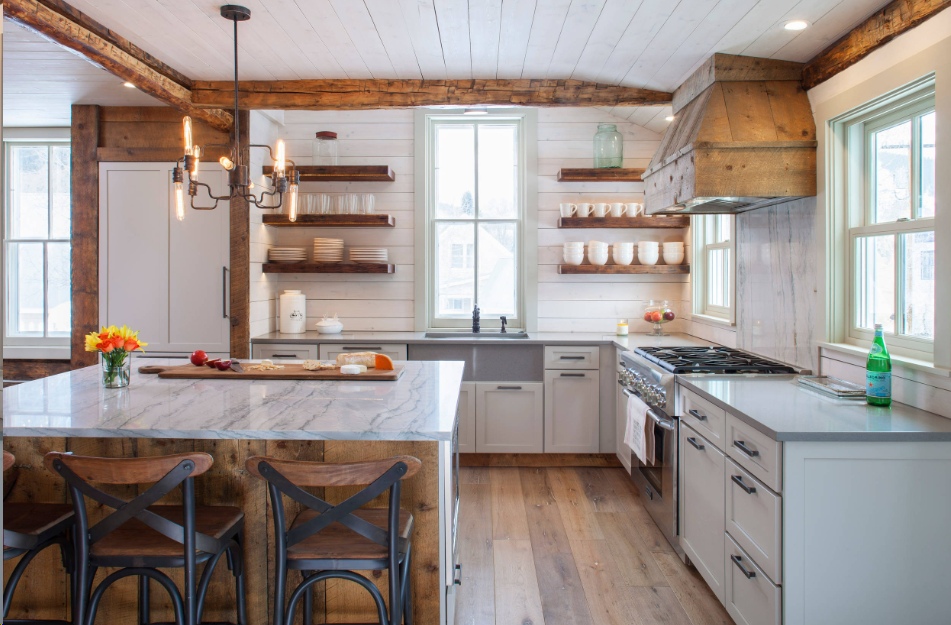 Image by Studio West
Image by Studio West
The traditional horizontal shiplap in this rustic Denver kitchen lends the space a relaxed and comfortable feel.
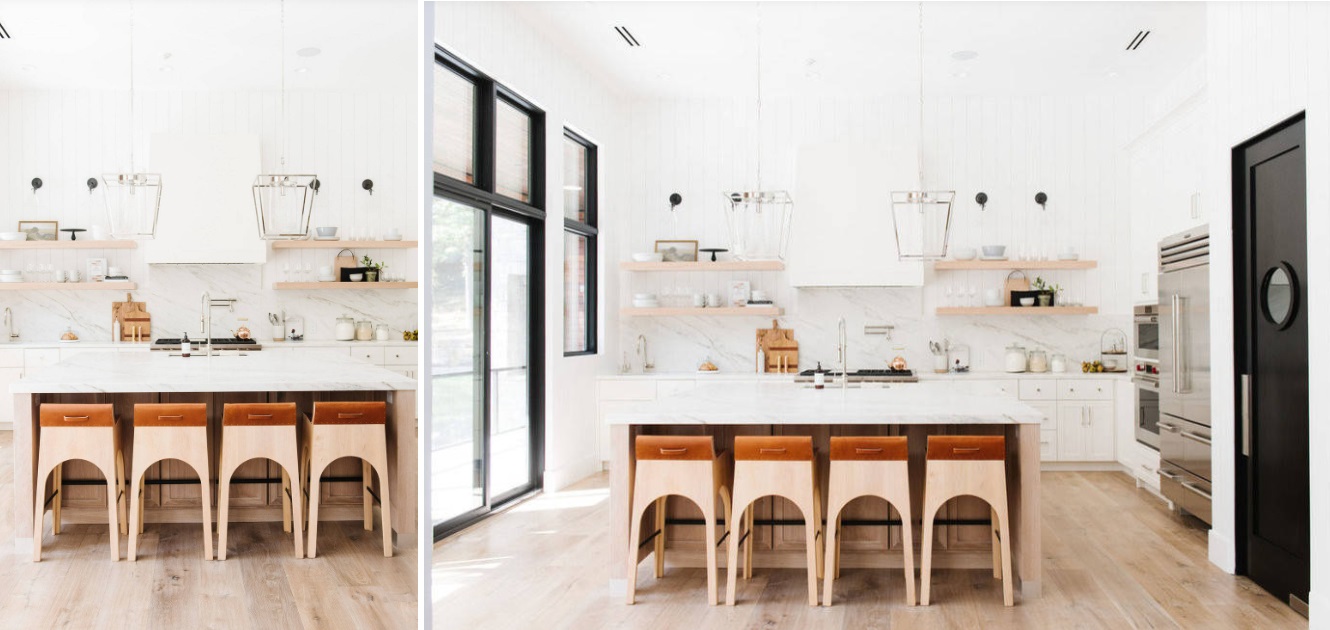 Image by Studio McGee
Image by Studio McGee
Studio McGee uses vertical shiplap to create a modern look in this kitchen. This shiplap style also draws the eye upward, giving the impression that the ceilings are higher than they are.
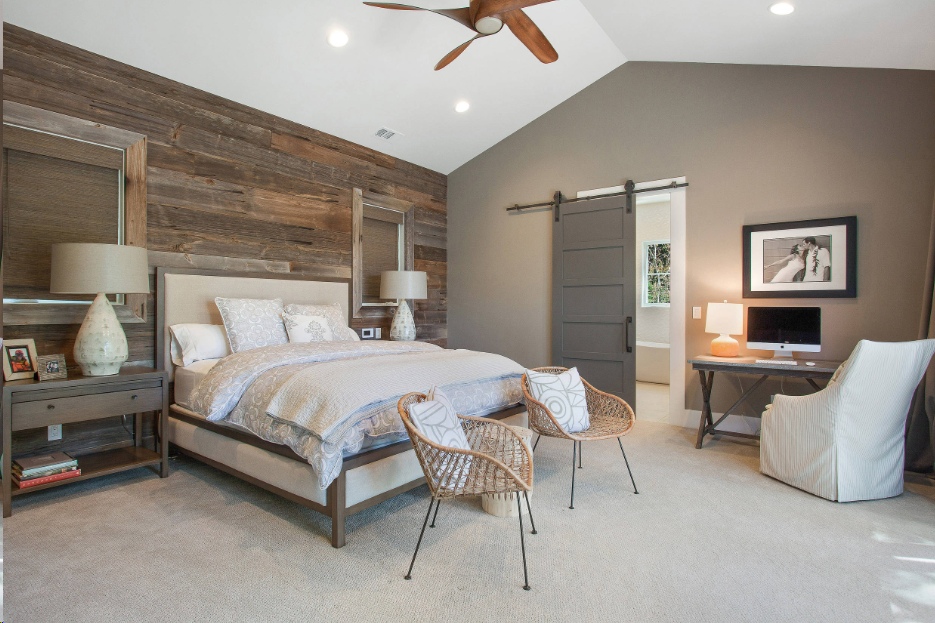 Image by LMK Interiors
Image by LMK Interiors
This reclaimed shiplap accent wall’s uneven color and texture add to the bedroom’s textured, yet industrial, look.
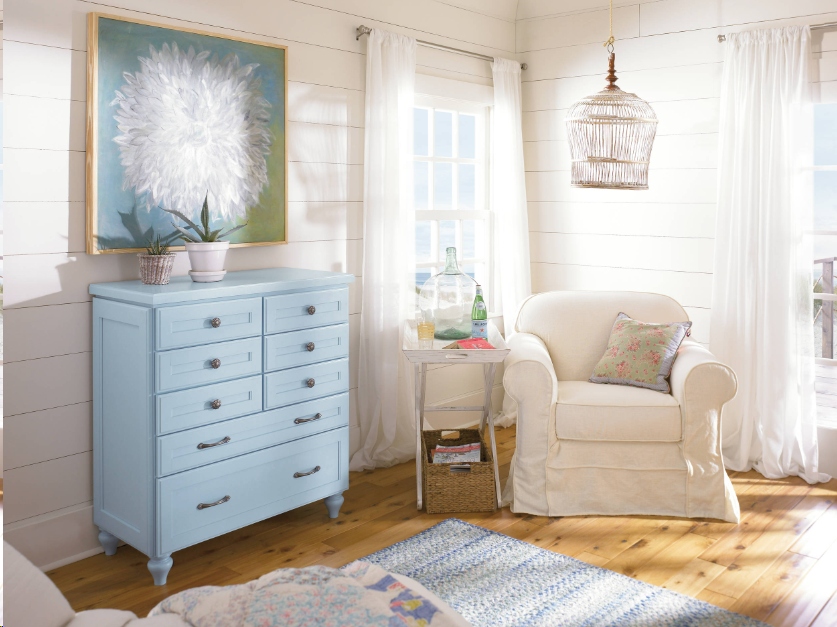 Image by Avondale Builders Supply
Image by Avondale Builders Supply
Wide shiplap boards cover the walls and ceilings of this bathroom space, accentuating the comfortable, coastal look.
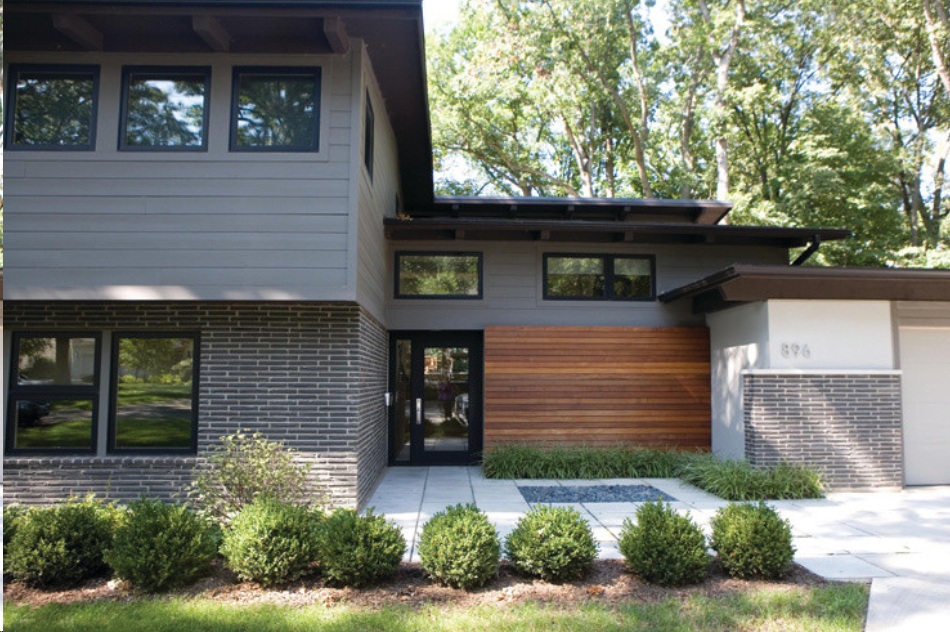 Image by Perimeter Architects
Image by Perimeter Architects
Cedar shiplap siding adds a pleasing textural variation to this home, adding warmth and sophistication.
Shiplap paneling is a historic style that will never disappear from use, but like every style, its popularity will ebb and flow. When Joanna Gaines reintroduced this historic style in her contemporary farmhouse-style renovations in 2013, shiplap’s popularity surged.
Shiplap still remains popular today, even though its popularity has declined in recent years. Many people will always appreciate shiplap’s timeless and versatile appearance. There are unique regional variations that make it distinct in different areas throughout the country and personal differences based on taste.
Shiplap, like all other types of paneling, will continue to evolve over time. Ultimately, it is more important to invest in the styles that you love than in the current trend. Trends come and go, but the styles you like will continue to bring you joy year after year.

Gisele Bundchen's contemporary twist on this emerging design trend is the talking point of her kitchen
Zendaya taps into the subtle power of this accessory to ensure her neutral living room is never boring
Amazon has become a go-to for chic home decor – here’s what we’re shopping from the 2024 Spring Sale
This designer's 'every seat needs a surface' rule has changed my living room layout forever – here's what I mean
5 designer Amazon storefronts that make shopping for stylish homeware so much easier
Joanna Gaines' 'mesmerizing' garden is the perfect example of how to grow cut spring flowers at home
Tan France opts for this stabilizing color palette to 'ground' his guest cottage, experts say
Shark's St Patrick's Day sale is here - and you can save $100s on vacuums and air purifiers
Matthew and Camila McConaughey's raw cabinets possess a texture and warmth that's replicable in our kitchens
12 Tips for Decorating Your Valentines Day Table
How To Optimize Stacked Washers And Dryers For A Perfect Combo
Styling Plywood Flooring In Your Home
What Elegance is in Today’s Design…and How to Achieve It
Pros & Cons of Monochromatic Décor
How to Style a Family-Friendly Coffee Table
DIY Kitchen Lighting Upgrade: LED Under-Cabinet Lights & Above-the-Sink Light
How To Set Up Your Own Meditation Room – Creating A Design Plan
12 Tips for a Golden New Years Eve Party
Expose Your Rusticity With Exposed Beams